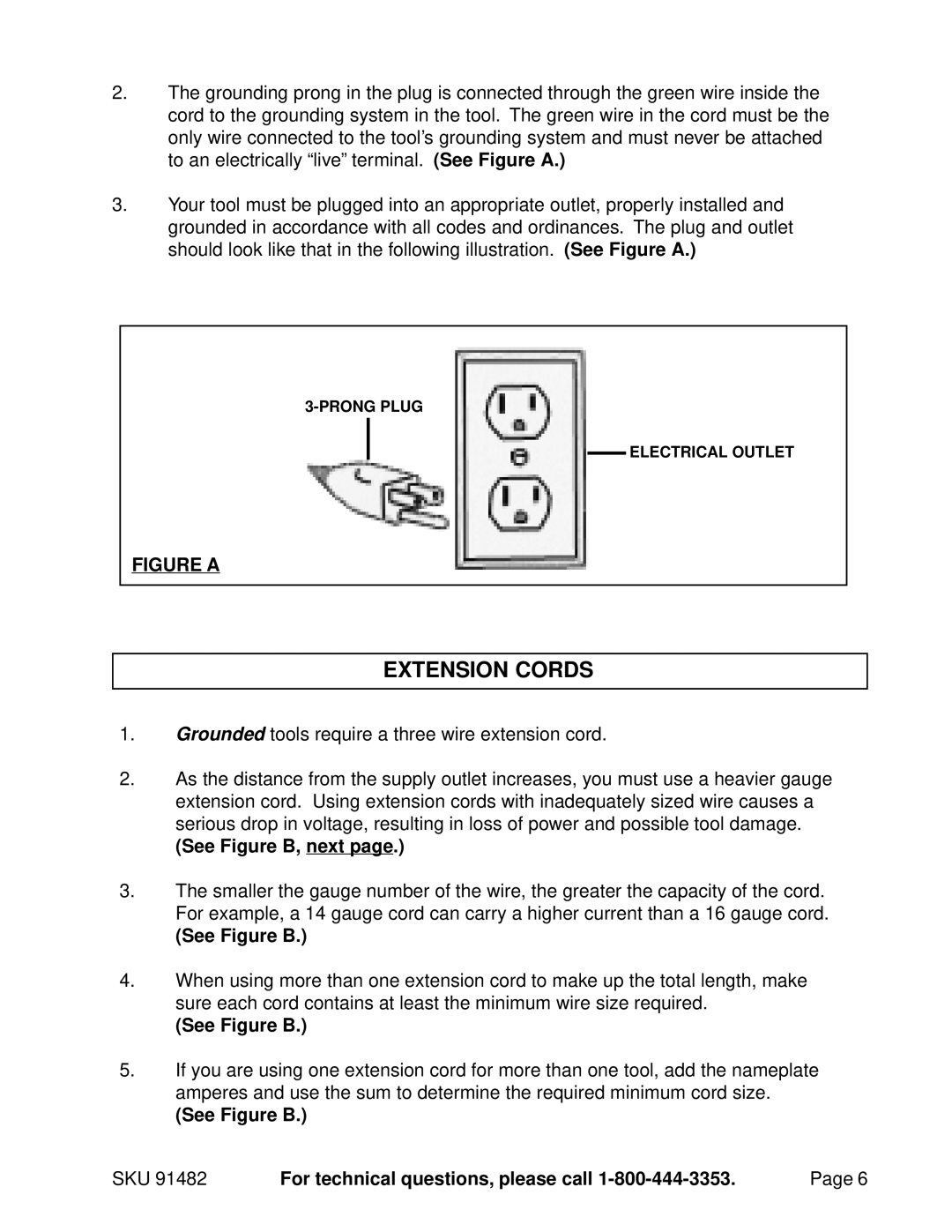
2.The grounding prong in the plug is connected through the green wire inside the cord to the grounding system in the tool. The green wire in the cord must be the only wire connected to the tool’s grounding system and must never be attached to an electrically “live” terminal.(See Figure A.)
3.Your tool must be plugged into an appropriate outlet, properly installed and grounded in accordance with all codes and ordinances. The plug and outlet should look like that in the following illustration. (See Figure A.)
ELECTRICAL OUTLET
FIGURE A
EXTENSION CORDS
1.Grounded tools require a three wire extension cord.
2.As the distance from the supply outlet increases, you must use a heavier gauge extension cord. Using extension cords with inadequately sized wire causes a serious drop in voltage, resulting in loss of power and possible tool damage.
(See Figure B, next page.)
3.The smaller the gauge number of the wire, the greater the capacity of the cord. For example, a 14 gauge cord can carry a higher current than a 16 gauge cord.
(See Figure B.)
4.When using more than one extension cord to make up the total length, make sure each cord contains at least the minimum wire size required.
(See Figure B.)
5.If you are using one extension cord for more than one tool, add the nameplate amperes and use the sum to determine the required minimum cord size.
(See Figure B.)
SKU 91482 | For technical questions, please call | Page 6 |
